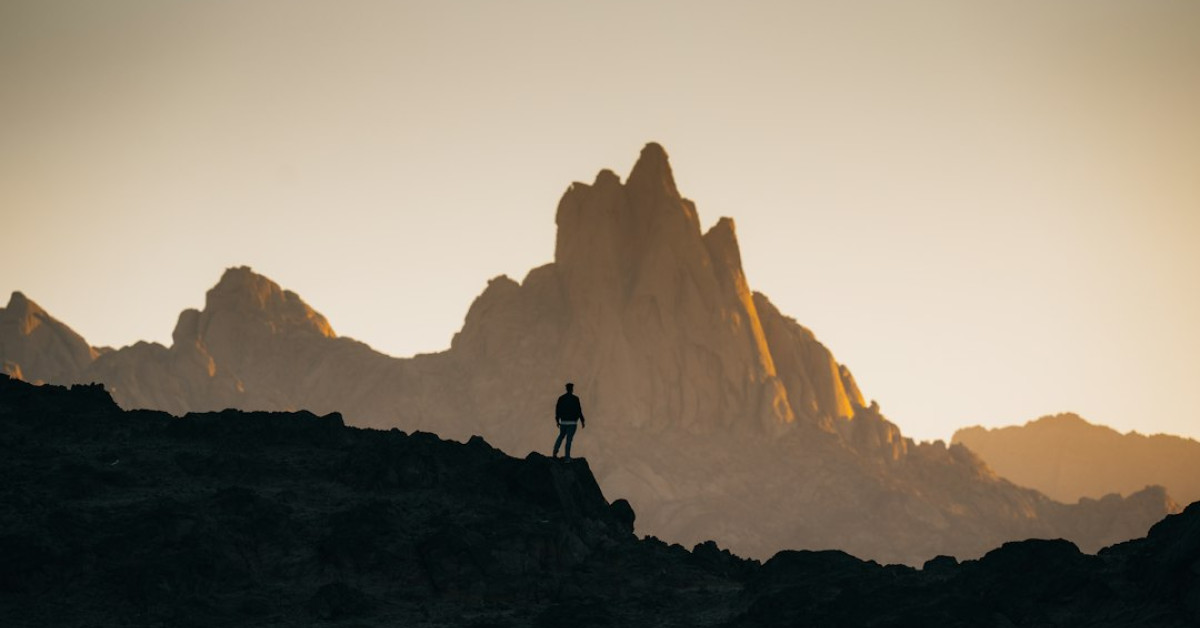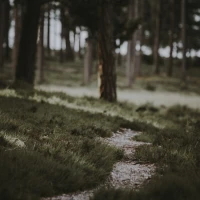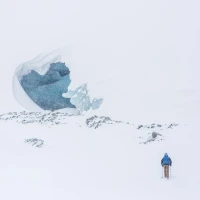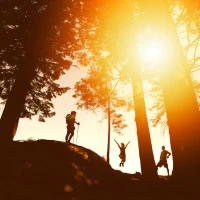Embarking on a trekking adventure offers not only an invigorating physical challenge but also access to some of nature’s most breathtaking visuals. For avid hikers and photography enthusiasts alike, capturing the beauty of these moments can be as rewarding as the journey itself. One particular phenomenon that stands out is the majestic silhouette seen at twilight. The interplay of fading light and the stark outlines of nature creates a stark and beautiful contrast that many aim to capture. In this comprehensive guide, “Trekking Twilights,” we will delve into the art of capturing the perfect hiking silhouette against the canvas of the skies, ensuring your trekking memories are immortalized in stunning visual form.
With the rise of photo-sharing platforms and outdoor photography becoming more popular, trekkers are always looking for ways to sharpen their creative skills. Trekking silhouettes stand out as they combine the raw beauty of nature with the solitude and strength of a figure against an awe-inspiring backdrop. Whether you are scaling a summit or watching the sun dip below the horizon, the silhouette you share can be a powerful statement of your journey.
Understanding the Basics of Silhouette Photography
Before you can capture that awe-inspiring salomon cross hike 2 mid gore-tex hiking boots - mens silhouette, it is essential to grasp the fundamental principles of silhouette photography.
Lighting in Silhouette Photography
Lighting is a critical component when aiming for the perfect silhouette. A strong light source is necessary to create the contrast between the subject and the background. This is best achieved during sunrise or sunset – golden hours for silhouettes – when the sun is positioned directly behind the subject.
Positioning and Framing Silhouettes
Catching a silhouette requires thoughtful consideration of composition. The subject’s shape should be clear and distinct:
- Outline and shape: Ensure your subject – whether a single hiker, a group, or features of the landscape – are recognizable in their contour.
- Subject placement: Use the “rule of thirds” to position your subject dynamically within the frame.
- Negative space: The area around the subject should be clean, allowing the silhouette to stand out sharply.
Camera Settings for Silhouettes
Adjusting your camera settings is pivotal in silhouette photography:
- Exposure: Aim for underexposure to get a dark subject against a bright background.
- Focus: Manual focusing might be necessary as most cameras struggle to autofocus on backlit subjects.
Equipment Essentials for Trekking Photography
Trekking cameras and equipment need to be light and functional. Let’s explore what’s needed to take that awe-inspiring hiking vs trekking silhouette shot.
Best Cameras for Trekking
Selecting the right camera can significantly impact the quality of your silhouette photography:
- DSLR cameras: Offer advanced settings for manual control.
- Mirrorless cameras: Lightweight and powerful, ideal for the outdoors.
- Action cameras: While not ideal for silhouettes, they are good for general trekking footage.
Lenses and Tripods
Having the right lens is just as important as choosing the camera. Wide-angle lenses are great for landscapes, while a tripod stabilizes the shot, especially in low light conditions.
Filters and Accessories
- Neutral density filters: These can balance the exposure between the bright sky and the subject.
- Graduated filters: Handy for keeping details in the sky without underexposing the subject too much.
Capturing the Silhouette: A Step-by-Step Guide
Now that we’ve covered the essentials, let’s break down the process of capturing that perfect trekking silhouette.
Choosing the Ideal Location
Seek out spots with an open skyline or an uncluttered background to emphasize the silhouette. High vantage points work well for dramatic effect.
Timing the Trek for Optimal Lighting
Planning your hike to coincide with sunrise or sunset can provide you with the perfect conditions for silhouette photography.
Setting Up and Framing Your Shot
Position yourself so the light source is behind the subject, and experiment with different angles to find the most striking composition.
Getting the Exposure Right
Meter for the sky, not the subject, to ensure a dark silhouette against a bright background. Taking several test shots in varying exposures can help you nail it.
Post-Processing Silhouette Photos
Post-processing is the final step in creating a magnificent hiking silhouette:
- Adjust contrast: Increase the difference between lights and darks to make your silhouette pop.
- Play with colors: Enhance the vibrancy of your twilight sky without lightening the subject.
- Fine-tune the details: Clean up any distractions and ensure the edges of your silhouette are sharp.
Inspirational Trekking Silhouettes
To offer some inspiration, here are a few examples of iconic trekking silhouettes:
- The lone hiker on a cliff edge, with a burst of sunrise colors.
- A group of trekkers atop a summit, celebrating their achievement at twilight.
- The stark outline of a tree or rock formation, with a trekker contemplatively seated beside it.
Advanced Techniques for Silhouette Photography
Once you’ve mastered the basics, there are advanced techniques that can enhance your silhouette shots:
HDR Silhouettes for Dynamic Range
High Dynamic Range (HDR) photography can help balance the exposure in a scene with extreme contrasts.
Motion Silhouettes for a Dynamic Touch
Use slower shutter speeds to introduce motion blur, adding a creative twist to the scene, such as capturing flowing water or fluttering leaves.
Creative Use of Colors and Filters
Manipulate colors in post-production or use filters to create mood and atmosphere.
Conclusion: The Art of Trekking Silhouettes
Trekking offers a unique opportunity to merge the wonders of the great outdoors with the magic of photography. A hiking silhouette is more than just an image; it’s an expression of adventure, immersing the viewer in a moment of quiet contemplation or jubilant victory. Through the interplay of light and dark, each captured twilight becomes a testament to the natural world’s allure and a hiker’s enduring spirit. With the right preparation, equipment, and creative vision, anyone can immortalize their trekking triumphs as breathtaking silhouettes against the canvas of the ever-changing sky.










